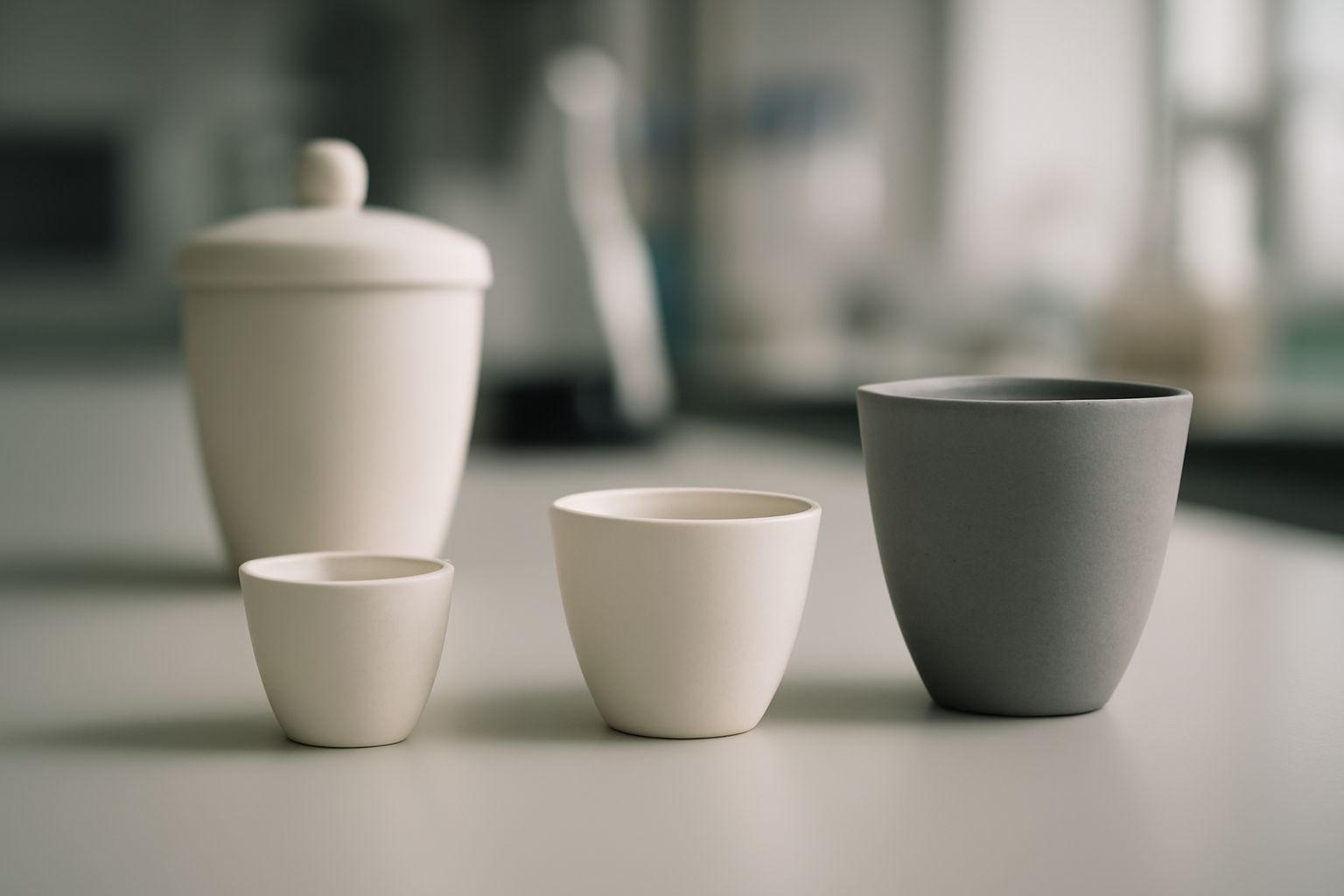Your cart is empty.
shop now
Your cart is empty.
shop now
Many tests fail because the wrong crucible material or size leads to wrong results or equipment trouble. This can risk both data quality and instrument safety.
Lab crucibles for accurate testing must match the material, temperature needs, and equipment fit. Platinum, alumina, or silica crucibles support different analysis types and help maintain high accuracy and reliable thermal stability.

Picking the right crucible starts with understanding each feature. I will review critical parameters that shape test success and show how to make decisions that save time and reduce risk.
Some samples need only basic containers, while others demand the highest purity and strength. Using the wrong material causes unwanted reactions or even crucible failure.
Laboratory crucibles use materials like platinum, alumina, silica, and zirconia. Each has different melting points, chemical resistance, and uses, which scientists select based on the test requirements.
| Material | Max Operating Temp (°C) | Chemical Resistance | Main Application |
|---|---|---|---|
| Platinum | 1770 | Acids, bases, oxidation (Learn more) | Trace analysis, precious sample melting |
| Alumina | 1700 | Acids, most bases, thermal cycling | General high-temperature use |
| Silica | 1050 | Acids, but not strong bases | Low-mass sample prep, clean analysis |
| Zirconia | 2200 | Strong acids, basic melts | Extreme high-heat, chemical research |
I match the crucible to my test based on chemical compatibility. Referring to industry guidelines from chemical resistance tables, I avoid accidents and keep my labware lasting longer.
Wrong crucible size brings uneven heating or even causes jams in sample holders. Equipment compatibility depends on precise measurements before the first use.
I select crucible size by confirming the holding chamber’s diameter and depth, checking sample volume, and reviewing required wall thickness to balance fast heating with secure handling.
| Parameter | Typical Range | Purpose | Why it Matters |
|---|---|---|---|
| Outside Diameter | 3–40 mm | Must fit instrument holder (lab equipment info) | Prevents movement, ensures even heating |
| Height | 2–60 mm | Enough volume for sample and reaction | Avoids overfilling and spillage |
| Wall Thickness | 0.2–2 mm | Thermal protection versus speed | Thicker walls buffer heat but slow response |
Measuring the holder and requesting sample crucibles can save time. Many labs stick to standard sizes for backup, but custom-fit products may boost productivity for critical projects. I keep a sizing chart handy for every device in use.
Tests sometimes reach extreme heat levels far above normal labware range. Using an unfit crucible can lead to cracks, contamination, or dangerous failures mid-test.
Choose crucibles that withstand at least 100°C above your process’s max temperature. Platinum or zirconia stand up to the highest heat for advanced chemical and thermal research.
| Material | Max Service Temp (°C) | Main Risk if Exceeded | Common High-Temp Use |
|---|---|---|---|
| Platinum | 1770 | Deformation or melting | DSC, trace metal analysis (DSC info) |
| Alumina | 1700 | Crazing, eventual cracking | Ashing, high-temp synthesis |
| Silica | 1050 | Softening, collapse | Light sample prep, organic reactions |
| Zirconia | 2200 | Chemical attack, softening | Glass-making, catalyst tests |
I monitor process temperatures and select crucibles with a safe margin. Details from maker’s datasheets or scientific melting point references help ensure I never run into mid-test failure.
Some tasks demand perfect purity, others need rough strength. Picking the wrong material hurts test results or damages samples permanently.
Crucible material affects test accuracy by changing thermal response, chemical safety, and contamination risk. Platinum offers top purity, while alumina and silica are strong mid-level choices for most labs.
| Performance Factor | Platinum | Alumina | Silica |
|---|---|---|---|
| Chemical Reactivity | Minimal across all chemistries | Good, but can react with alkalis | Bad with bases, great with acids |
| Heat Conductivity | Very high, stable readings | Moderate, useful for routine | Lower than others |
| Sample Contamination | Almost none (see trace elements) | Possible if sample attacks wall | Rare, unless sample is alkaline |
| Durability | Very high, lasts for years | Good, if not shocked | Lower, avoid sudden heat changes |
I always read the chemical resistance and durability ratings before every purchase. Matching sample, process, and crucible is the base for every trusted lab result according to ACS guides and modern laboratory standards.